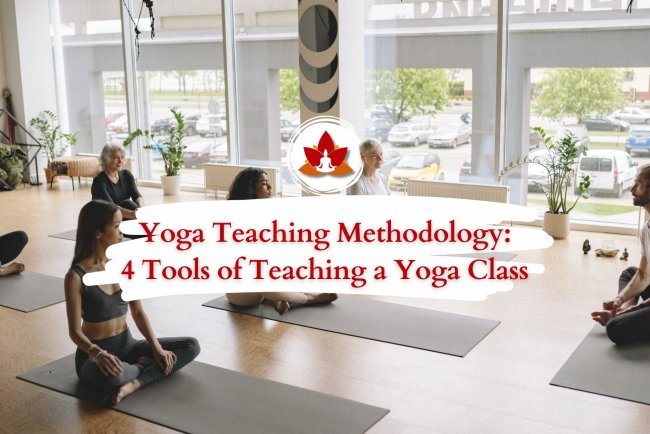Yoga Sutra 1.30: vyādhi-styāna-saṁśaya-pramādālasya-avirati-bhrānti-darśana-alabdha-bhūmikatva-anavasthitatvāni-cittavikṣepāste-’ntarāyāḥ

Patañjali’s sutra—vyādhi-styāna-saṁśaya-pramādālasya-avirati-bhrānti-darśana-alabdha-bhūmikatva-anavasthitatvāni-cittavikṣepāste-’ntarāyāḥ—directly addresses the obstacles on the yogic path.
He lists nine powerful hindrances, each one a form of citta-vikṣepa, meaning a disturbance or scattering of awareness. These are not merely “problems” but deep states of inner disharmony that weaken resolve and disrupt progress. By naming them openly, Patañjali gives the practitioner the gift of clarity—an invitation to observe these obstacles, understand their nature, and ultimately rise above them with conscious effort and self-awareness.
Yoga Sutra 1.30: Sanskrit Translation
Sanskrit:
व्याधि-स्त्यान-संशय-प्रमाद-आलस्य-अविरति-भ्रान्ति-दर्शन-अलब्धभूमिकत्व-अनवस्थितत्वानि चित्तविक्षेपाः तेऽन्तरायाः ॥
Transliteration:
vyādhi-styāna-saṁśaya-pramādālasya-avirati-bhrānti-darśana-alabdha-bhūmikatva-anavasthitatvāni cittavikṣepāste’ntarāyāḥ
Word-for-Word Translation
-
vyadhi = illness, disease
-
styana = mental dullness, stagnation
-
samsaya = doubt, skepticism
-
pramada = carelessness, negligence
-
alasya = laziness, inertia
-
avirati = overindulgence, inability to withdraw from sense pleasures
-
bhranti-darsana = false perception, mistaken understanding
-
alabdha-bhumikatva = inability to attain a stage of practice
-
anavasthitatva = instability, failure to remain steady in an attained stage
-
citta-viksepah = distractions, disturbances of the mind
-
te = they
-
antarayah = obstacles, hindrances
Full Translation
“Disease, mental stagnation, doubt, carelessness, laziness, overindulgence, false perception, inability to progress, and instability in maintaining progress—these scattered states of mind are the obstacles on the yogic path.”
Explanation and Insights
In the verses leading up to this (Sutras 1.27–1.29), Patañjali emphasizes the transformative power of Om meditation in dissolving mental disturbances. Sutra 1.30 then clearly lists the nine obstacles that disrupt progress.
This sutra acts as a diagnostic lens—before offering remedies, Patañjali helps practitioners recognize what stands in their way. These challenges are universal; they arise across cultures, eras, and levels of experience. Every practitioner, no matter how advanced, encounters them at some point.
Understanding these obstacles is the first step.
To transcend them, you must first be aware of them.
The Nine Obstacles Explained
1. Vyādhi — Illness
Physical well-being is essential for steady practice. When the body is weakened by illness, discomfort, or imbalance, the mind becomes disturbed. Clarity, discipline, and meditation suffer—although yoga itself can support healing.
Modern Perspective:
Today, this manifests as lifestyle-related conditions such as stress, hypertension, fatigue, and insomnia. To maintain a strong foundation, practitioners must cultivate holistic wellness through diet, rest, mindful movement, and breathwork.
2. Styāna — Mental Sluggishness
Styāna is a state of inertia—lack of motivation, heaviness, and fogginess. Even when we know practice is important, we feel too dull or uninterested to act.
Modern Perspective:
Often experienced as burnout, despair, or lethargy. Energy can be rekindled through pranayama, time in nature, or setting small, achievable goals.
3. Saṁśaya — Doubt
Doubt arises toward oneself, the practice, or the teacher. Questions like “Am I capable?” or “Will this work for me?” weaken conviction and halt consistent effort.
Modern Perspective:
With so much conflicting information online, seekers become confused easily. Cultivating śraddhā (faith) and validating teachings through personal experience helps dissolve doubt.
4. Pramāda — Carelessness
Pramāda is a careless, casual approach to practice—neglecting discipline, procrastinating, or treating yoga superficially.
Modern Perspective:
Practice becomes robotic when presence is missing. The remedy lies in sincere effort, mindful awareness, and consistent abhyāsa (practice).
5. Ālasya — Laziness
Unlike mere tiredness, laziness is the intentional avoidance of effort. Comfort becomes more desirable than discipline, and excuses replace action.
Modern Perspective:
Digital distractions, convenience culture, and overstimulation often fuel this obstacle. Cultivating tapas (discipline) and simple daily routines helps overcome it.
6. Avirati — Overindulgence
Avirati is the inability to withdraw from sensory pleasures—food, entertainment, desires, possessions, or constant stimulation. The mind remains outwardly focused, delaying deep spiritual work.
Modern Perspective:
Consumerism, compulsive scrolling, and overstimulation intensify avirati. Practicing moderation (mitāhāra) and developing vairāgya (detachment) are essential remedies.
7. Bhrānti-Darśana — False Perception
This obstacle appears as delusion, misunderstanding, or misinterpretation. One may mistake egoic impulses for spiritual insight or follow misguided beliefs.
Modern Perspective:
In today’s spiritual marketplace, seekers can be easily misled by shallow rituals or unverified information. Authentic texts and guidance from qualified teachers help dissolve this confusion.
8. Alabdha-Bhumikatva — Inability to Progress
Despite sincere effort, one may struggle to reach the next stage of concentration or meditation. This stagnation leads to frustration and self-doubt.
Modern Perspective:
Spiritual growth unfolds like nature—slowly and organically. Patience, refinement of technique, and dedication allow breakthroughs to emerge naturally.
9. Anavasthitatva — Instability
Even after progress is made, the practitioner may regress into old patterns or distractions. Stability becomes difficult to maintain.
Modern Perspective:
This resembles irregular practice, where progress is lost due to inconsistency. Persistence, humility, and grounding routines help sustain the growth achieved.
A Framework of Obstacles: Psychological and Spiritual
These nine obstacles rarely arise in isolation—they tend to appear together, feeding and reinforcing one another. For example:
-
Laziness (alasya) may arise as a result of illness (vyadhi).
-
Negligence (pramada) often stems from doubt (samsaya).
-
Overindulgence (avirati) can lead directly to instability (anavasthitatva).
Patañjali presents these obstacles as interconnected expressions of citta-viksepa, the scattered or disturbed state of the mind. Rather than viewing them as separate issues, practitioners gain wisdom when they begin to see them as patterns—interwoven tendencies that cloud clarity and disrupt progress. Recognizing these patterns is the first step toward dissolving them and moving toward freedom.
Practical Applications for Modern Seekers
-
Self-Diagnosis:
Notice which obstacles appear most frequently in your life. Journaling or mindful reflection helps reveal recurring patterns and emotional triggers.
-
Integrated Lifestyle:
Balanced nutrition, regular movement, and proper rest create a stable foundation. These simple habits support recovery from illness, fatigue, and mental stagnation.
-
Disciplined Attentiveness:
Consistency is more powerful than intensity. Even brief daily practice builds far greater progress than occasional long sessions.
-
Study and Devotion:
Reading authentic texts and learning from trusted teachers strengthens understanding and dissolves doubt, allowing faith (śraddhā) to deepen naturally.
Conclusion
Yoga Sutra 1.30 is a mirror reflecting each seeker's inner landscape. Patañjali gives us a chart of the challenges along the path of yoga by enumerating nine ones: illness, drowsiness, doubt, inattention, idleness, overindulgence, wrong perception, lack of growth, and instability. These are milestones of awareness and not hindrances that take forever.
Any achievement is an opportunity for growth. The practitioner gradually wipes away such distractions, quiets the mind, and moves towards the quietness of samādhi through discipline (abhyāsa), detachment (vairāgya), devotion (śraddhā), and perseverance.
This sutra is a guide and a path towards the reality of the modern seeker. It reminds us that though setbacks are unavoidable, there are timeless methods to cope with them. Challenges are ultimately teachers that guide us to resilience, clarity, and the unflinching light of consciousness within—not enemies.
What's Your Reaction?


























